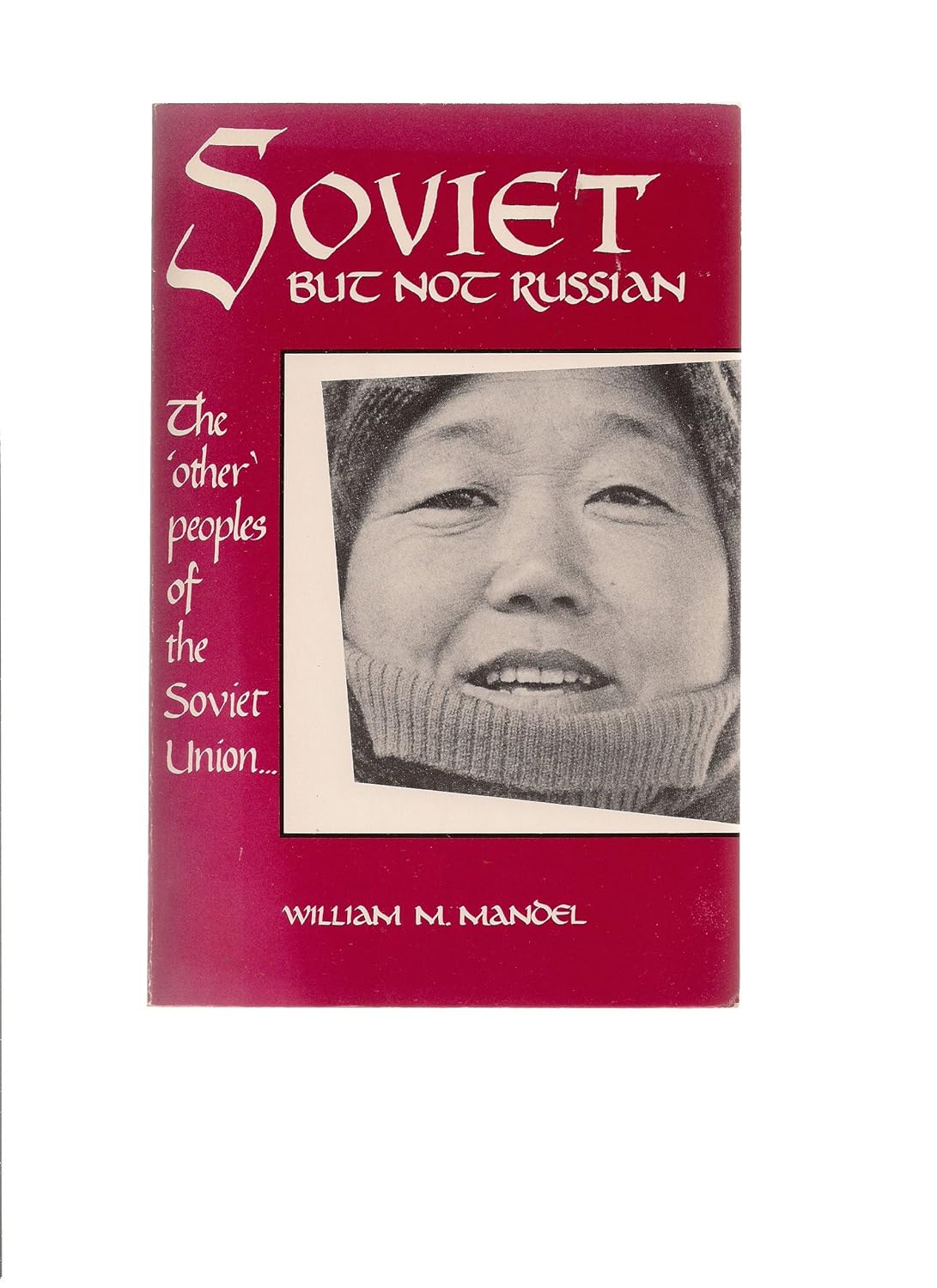Soviet but not Russian, by William Mandel
As reviewed by Jaroslaw Iwanus of the University of Alberta in Eastern European Quarterly, Volume XX, Number 4 (Winter, 1986).
Published by Edmonton: University of Alberta Press, 1985. Pp. 382.
A sociology professor who reviewed [Soviet but Not Russian] in the Edmonton Journal was happy to report the joy of his students when they exclaimed, “For one, professor, you didn’t stick us with a stuffy academic textbook!” Their judgement is indeed correct. The book is not stuffy; nor, however, is it very academic. While students of Russia and the Soviet Union should be glad that more work is being produced on the non-Russian nationalities there, it is unfortunate that this effort does not treat the subject in a scholarly manner. The author’s methodology is faulty and his conclusions are not only suspect but tell us little about political and economic life for the Soviet nationalities and even less about the relations among them.
The books at these nationalities through the eyes of a frequent visitor and former resident. It briefly considers the history of each and points how much better off these people are under the Soviet regime than they were under the tsarist. The author constantly tells us how morally superior he feels Soviet policy is towards its minorities, compared to that of the United States. The underlying theme of the book is a concern for peace, which could be achieved, as Mr. Mandel subtly suggests, by the rest of the world adopting the USSR’s centralized political system and its attitude of inter-national harmony. This leads the author to writing propaganda instead of considering this vital subject at a scholarly level.
Mr. Mandel’s methodology is faulty, not in that he uses taped interviews with Soviet citizens as the basis of his research but rather in that he accepts their statements without critically analyzing them, especially in terms of what positions these people held in the Soviet power structure. The author seems unaware that his interviewees are government functionaries, specifically [designated] to speak with foreigners and to represent only the positive aspects of Soviet life to them. The opinions [that] Mr. Mandel garners do not, therefore, provide a balanced subjective overview of Soviet reality. He does not converse with any peasants or workers at random, and it is the latter, after all, who supposedly form the socio-political basis of the Soviet state.
Due to his faulty methodology, Mr. Mandel’s conclusions are rendered suspect. Examples abound, but one of these is most representative:
In all, 65,000,000 non-Russians wound up Soviet in the 1920s….the only rational explanation for this is that the great bulk of them wanted it that way (p. 66).
Popular desire is hardly the only “rational explanation for mass Sovietization in the 1920s. This is not to deny that some non-Russians, perhaps even the “great bulk”, wanted to become Soviet because they were won over by the Bolsheviks’ promises of peace, land, national self-determination, and socialism. However, Mr. Mandel does not mention that what made Sovietization ultimately successful was the support of Moscow-controlled Red Army troops. In those areas where the Red Army could not establish itself, such as Poland and Finland, Sovietization did not materialize. A complete “rational explanation” for Sovietization of the Russian borderlands must include that Russia wanted and needed those areas for economic and strategic reasons, and that it would use armed force to acquire them.
Mr. Mandel is on his weakest ground when he summarizes the history of each nationality. His historical assessments, often taken uncritically from Soviet sources, contain little objectivity. For example, in the Great Northern War of 1708-09, “Sweden invaded the Ukraine, but was thrown back by Russians, aided by Ukrainian Cossacks and the resistance of the peasants (p. 227). If this was so, then why, as Mr. Mandel says in the next sentence, did the victor, Peter the Great, suppress “Ukrainian autonomy and [begin] an effort at Russification…”? The answer, of course, is that Sweden did not invade Ukraine per se, but Russia as a whole. The majority of the Ukrainian Cossack leadership, including Hetman Ivan Mazepa, allied itself with the Swedes against Peter in order to salvage some of their rapidly disintegrating autonomy. Sweden and their Cossack allies lost the war at the Battle of Poltava in 1709 and Peter retaliated against the Ukrainians with the Russification and further loss of autonomy [that] the author mentions. There are many such examples of shoddy scholarship, giving the reader a synopsis of history [that] is incomplete at best.
The book is also technically weak. For a work [that] is intended to glorify the supposed equality of all Soviet nationalities, we find only Russian transliterations of non-Russian words. There are also inconsistent transliterations and even incorrect translations (for instance, Kievskaia stariana is rendered as “ancient Kiev”, p. 232).
Although the book does contain some useful information (the chapter on Jews, for example, is much fairer and better substantiated than the rest of the work), it is generally one-sided [and] superficial, and contributes little to a scholarly understanding of the USSR and its peoples. It is really quite surprising that a university press would publish such a work under the guise of scholarship because even if the output on this subject continues to be abysmally low, it is better to remain uninformed by omission than by commission.

